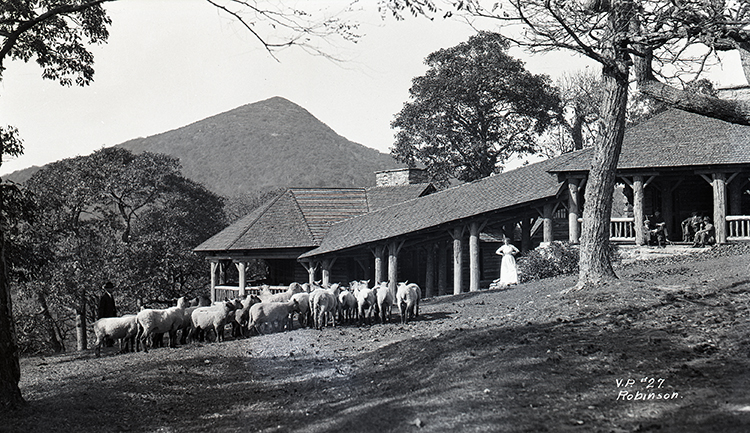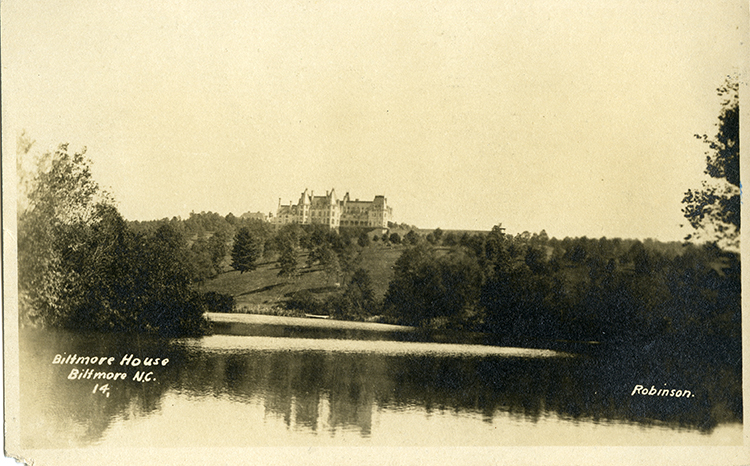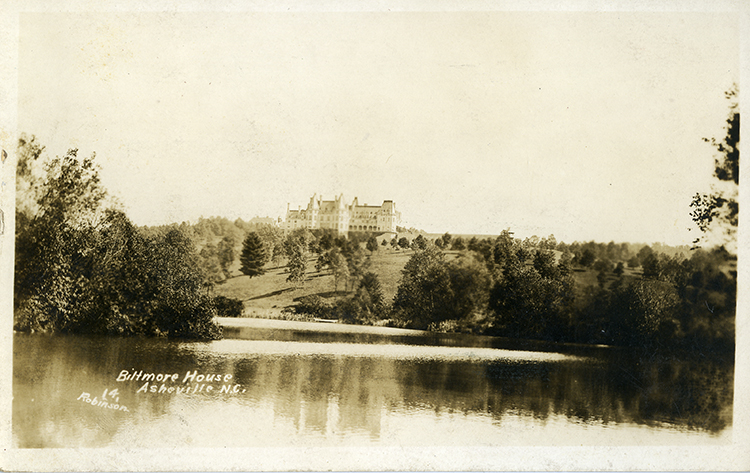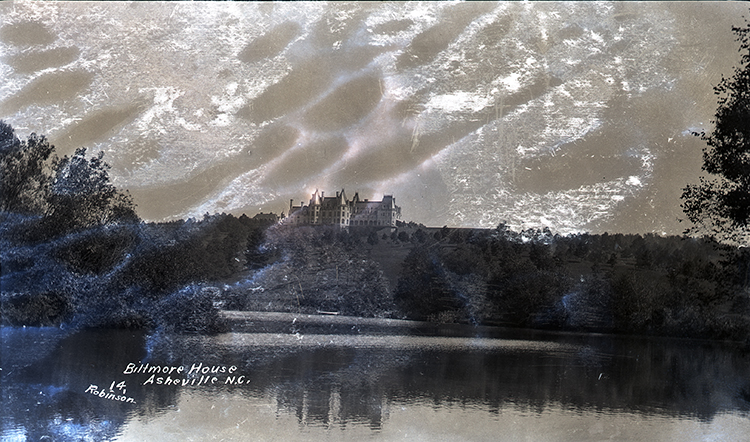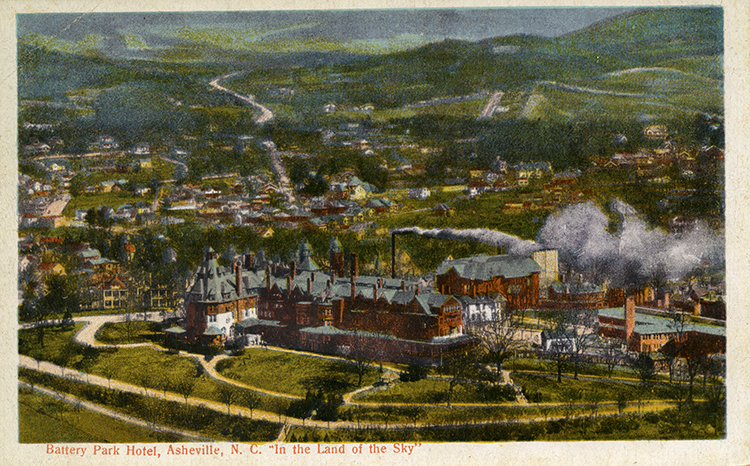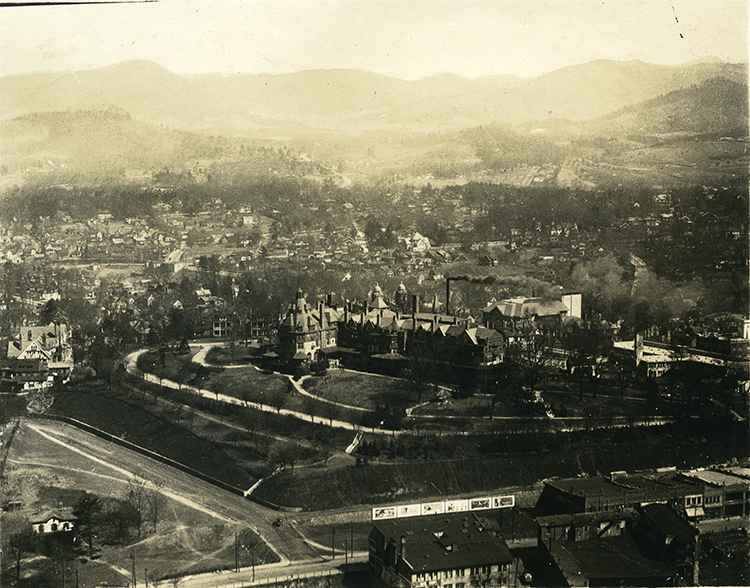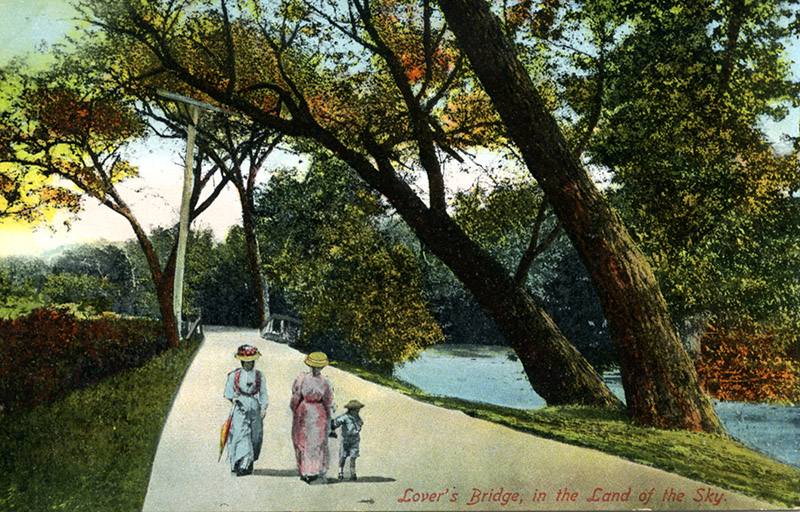
Sometimes you lose yourself in an archival rabbit hole.
This particular adventure started during the processing of the latest tranche of postcards for the Fred Kahn Asheville Postcard Collection. Kahn was an avid collector of postcards, often accumulating numerous copies of the same card, and filing the cards in binders by subjects or theme.
Binder 12 of the collection covers the French Broad and Swannanoa Rivers, and within the Swannanoa images there were numerous views of Lovers Bridge*. But where was Lovers Bridge located?
And so, like Alice, we find a rabbit hole.
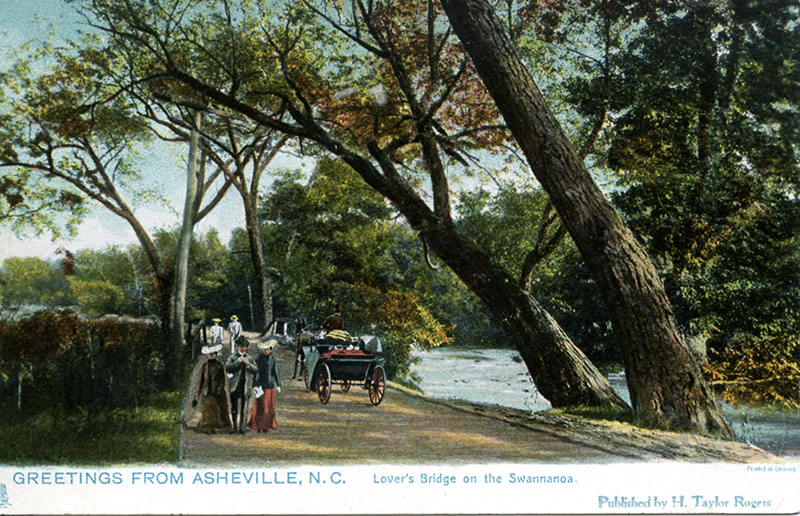
All the postcards show a similar view; the river to the right of the image, a track/road (sometimes paved, sometimes muddy) in the center foreground and leading to a bridge with timber railings, somewhere near the middle of the image. Beyond the bridge, both river and track curve leftwards.
Any dates indicate the cards are from the early years of the 20th century, when the Swannanoa had trees and bushes along the banks, but no buildings or anything else to suggest exactly where the bridge was.
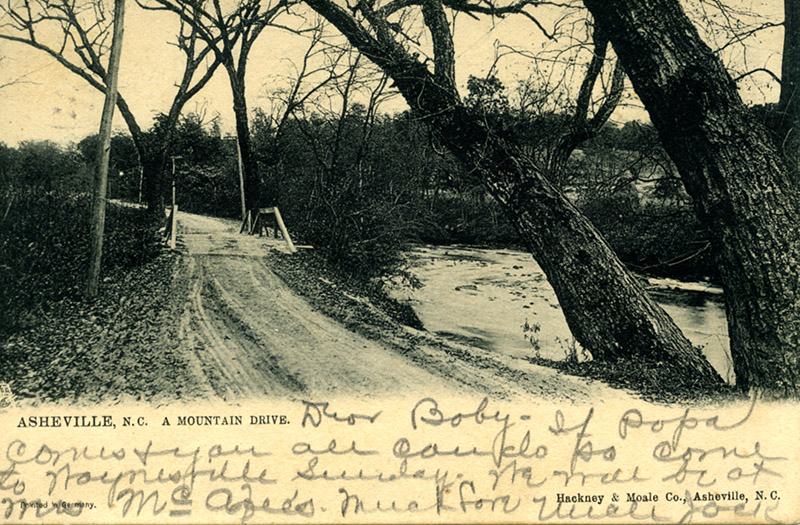
What the postcards make clear is that Lovers Bridge was parallel to the Swannanoa, it didn’t cross the river. But it was a bridge, it had to cross something, and if not the Swannanoa, then what?
Of the nearly 30 postcards showing Lovers Bridge, only one [12_35_002], showing two ladies and a small child walking on the track, includes any kind of description on the verso. This reads, “Lover’s Bridge is one of the popular points along the Swannanoa River, and is located about one mile above the Biltmore Bridge. The old wooden bridge has recently been replaced by an iron one.”
An approximate location!
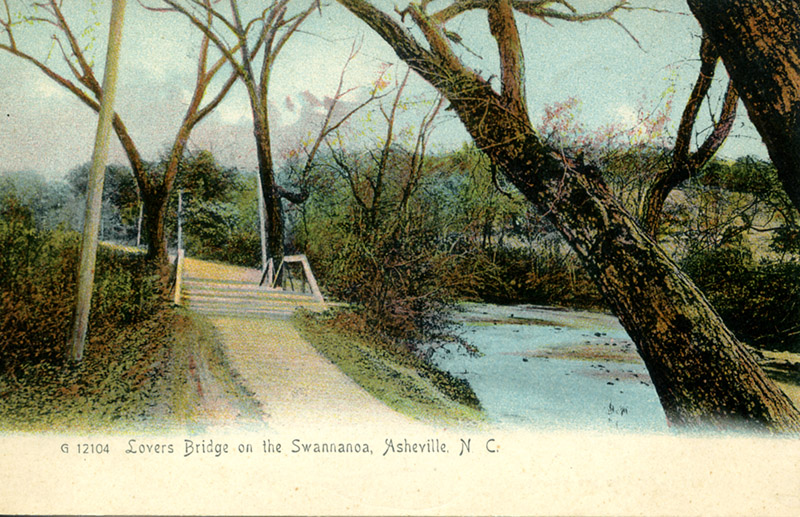
To keep a long story short, approximately 8/10ths of a mile (by Google maps) from the present day bridge where Biltmore Avenue crosses the Swannanoa, Ross Creek enters the river. Is it this creek that Lovers Bridge bridged?
Certainly the course of the river seems to fit this supposition, as upstream from Ross Creek, the Swannanoa does bend left, like in the postcards.
This would make the present day location of Lovers Bridge on Swannanoa River Road, near Hajoca plumbing supplies. A big change from the rural track of 120 years ago!
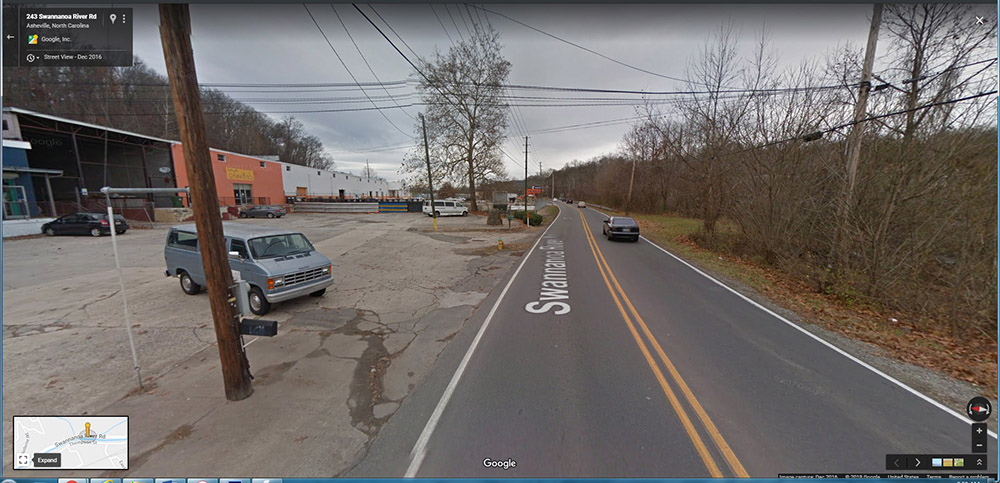
One obvious way to cross reference the location would be from maps or travel books from the early 1900s, especially since Lovers Bridge was “popular” and featured on so many postcards.
But, despite looking in many nooks and crannies in the archival rabbit hole, not a single reference to Lovers Bridge has yet been found.
Why might this be?
One possible explanation may lay in the postcards. Postcard manufacturers would often “manipulate” a view, so that a daylight scene is transformed into a moonlight view, images are colorized, and people and objects added or removed.
Image manipulation did not begin with Photoshop!
As noted previously, the postcards all show a similar view.Is it possible that an early postcard designer adopted the name “Lovers Bridge” for this particular bridge near the Swannanoa, and the name was continued by subsequent postcard designers, but the name never existed outside the postcard artist fraternity?
Maybe, or maybe not.
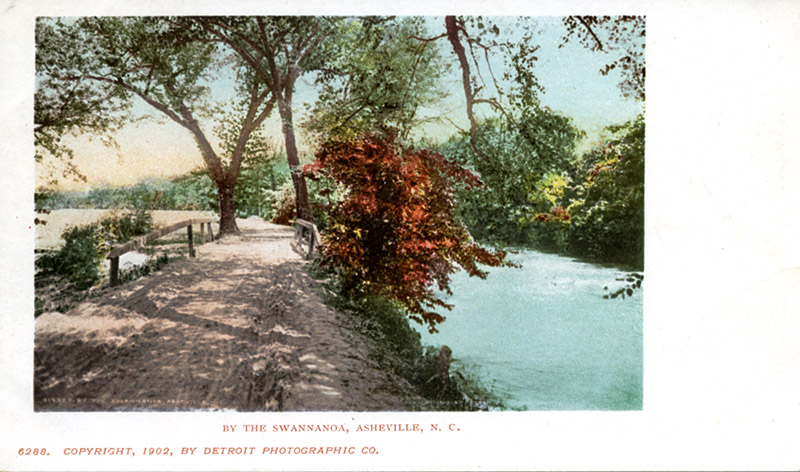
Despite spending far too much time exploring this particular rabbit hole, few definitive answers have been found so far. If any reader has information about Lovers Bridge, please contact Ramsey Library Special Collections, as we would love to resolve this particular obsession!
Colin Reeve, Special Collections
*The bridge is called both Lovers and Lover’s Bridge on postcards. For consistency “Lovers” has been used in this blog


